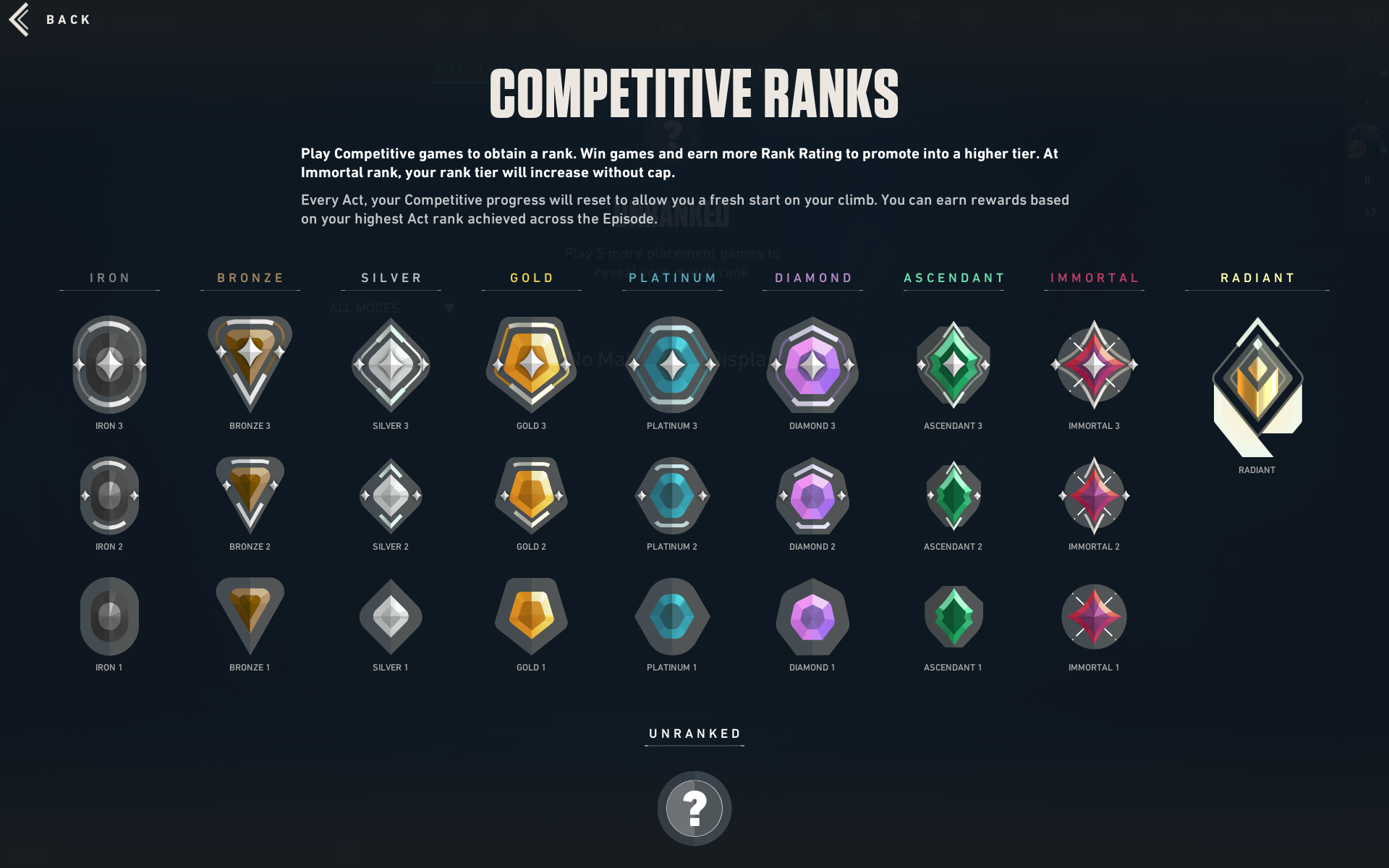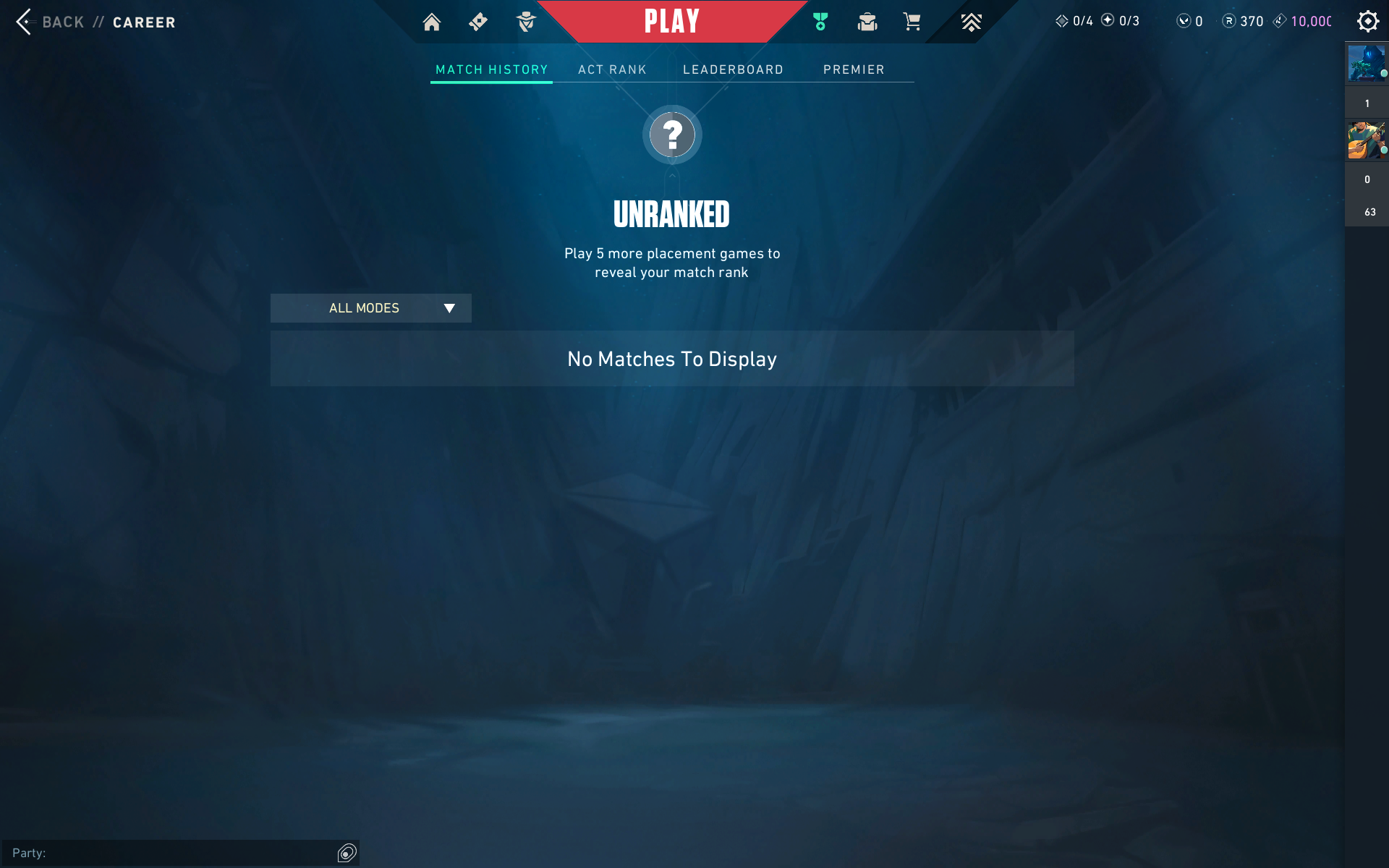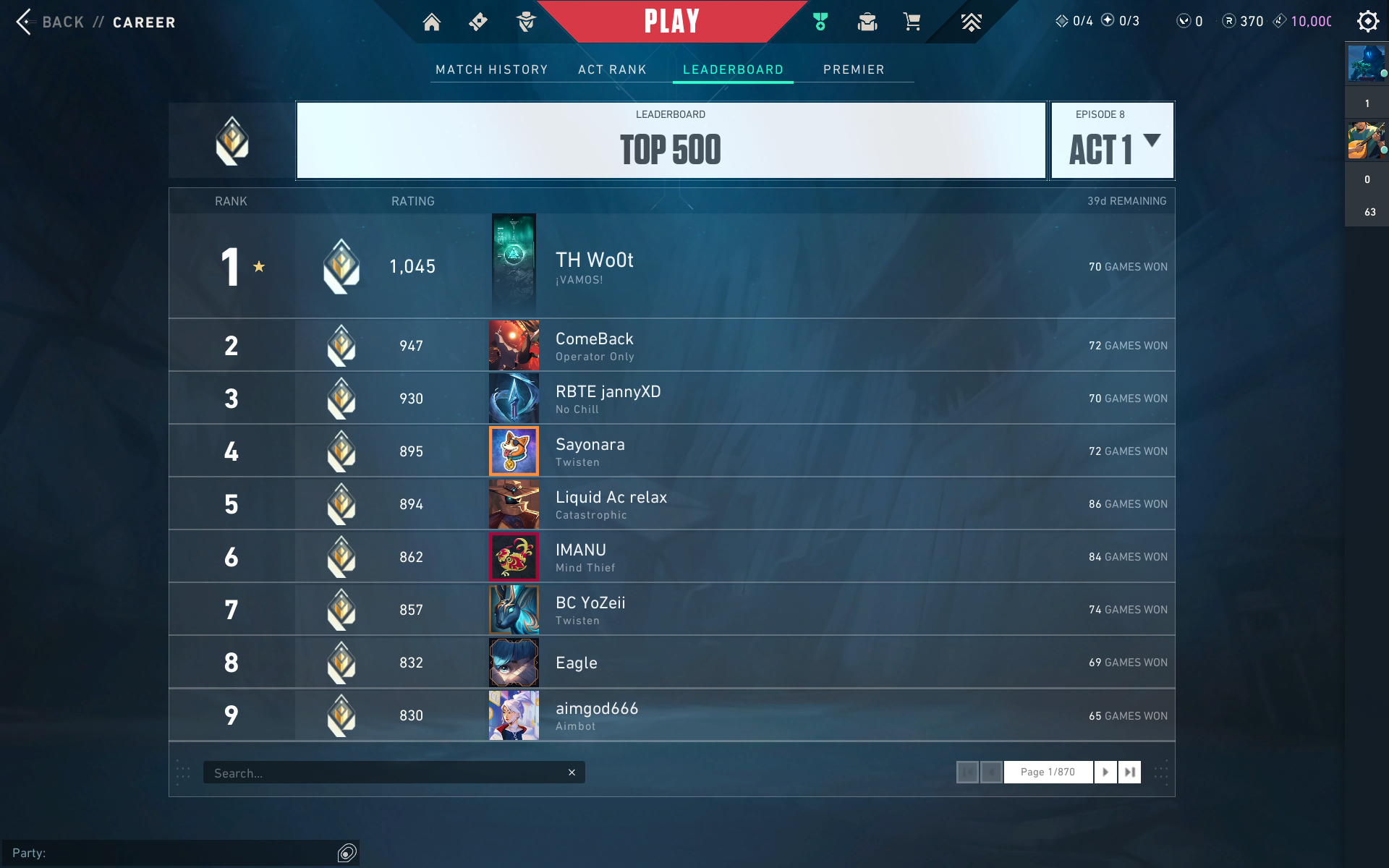VALORANT Ranking System Explained
Unlock the mysteries of VALORANT's ranking system with our comprehensive guide. From Iron to Radiant, discover the strategies to climb the competitive ladder.
Unlock the mysteries of VALORANT's ranking system with our comprehensive guide. From Iron to Radiant, discover the strategies to climb the competitive ladder.
Since its release, VALORANT has grown in popularity at an exponential rate. The mix of a hero-based shooter and a tactical shooter has piqued the interest of many players. VALORANT was intended to be an eSports shooter, and it has been quite successful at that. Given League of Legends' competitive success, it is unsurprising to see another game from the same developers on the eSports podium.
However, in order to create a game that is fair to players of all skill levels, a good ranking system is necessary. Fortunately, Riot Games has developed a difficult but fair ranking system for VALORANT. However, due to its complexity, it can be difficult for new players to understand. So, here is an explanation of VALORANT’s ranked system – all the ranks, how to climb, and more.

Ranks are esteemed positions that you get based on skill. The higher your rank, the better you are at the game. VALORANT has a total of 9 ranks. The ranks are Iron, Bronze, Silver, Gold, Platinum, Ascendant, Immortal, and Radiant
Except for Radiant, each rank is divided into three divisions, I, II, and III, with three being the highest and one being the lowest. Radiant is the only rank without divisions, meaning there is no Radiant I, II or III, it’s just Radiant.
Now that you know all the ranks, let’s talk about the rank progression.

For new accounts, you need to unlock competitive mode first. To do so, you need to reach Level 20 in-game. This can be easily done by playing the other casual modes, like Team Deathmatch or Unrated. Once you reach level 20, you will be able to play ranked.
However, you will notice that your rank is marked with a question mark, indicating that you are not currently ranked. You will need to play five placement matches to be ranked. These matches will then be taken into account to calculate your rank. Ascendant I is the highest possible rank in placement matches.
To advance from one rank to another, you must win matches. Doing so rewards you with RR or Ranked Rating. These are just the points you need to advance from one rank to another. Every division has a 100RR threshold, which means you must cross that threshold to advance to the next rank. For example, if you have 0 RR in Silver I, you will need 100 more to advance to Silver 2.
When you reach the 100 RR threshold, you start the next rank with an additional RR, usually 10. So, if you lose your next match, you will not be demoted immediately. It is also worth noting that you will only be demoted if you lose a match with 0 RR.
With the exception of Immortal and Radiant (which we will explain below), all ranks use the same system.

From Iron to Ascendant, to move up each rank, you need to earn 100 RR. And when you reach 100 RR in Ascendant 3, you will be promoted to Immortal 1 (starting at 10 RR). From here, the system changes. Instead of 100 RR, you must cross a threshold RR to reach Immortal 2. This threshold varies by region (all are listed below). For example, if you are a BR player, you will need 100 RR for Immortal 2 and 230 for Immortal 3.

Just like there is a threshold for Immortal, there is also one for Radiant. However, the threshold just ensures that you are qualified to be Radiant. To unlock the rank, you need to be one of the top 500 players in your region. That is, at the minimum, you need to get more RR than the top 500th player in your region.

Various factors are used to calculate the RR you gain or lose after every match. Of course, winning or losing is the most important thing when it comes to RR. Winning a match will grant your RR whereas losing will deduct some. The outcome of the match will result in a base RR gain or loss. However, some factors can get you extra RR on wins or less RR on losses. These are:
In summary, perform well and win matches by wide margins to get extra RR. If you do this consistently, you will also get a double rank-up. This happens when you are constantly top-fragging winning matches. Double rank-up means you will be promoted up two ranks. For example, getting a double rank-up on Gold I will get you to Gold III.
Acts and Episodes are VALORANT’s alternative to seasons. There are two main EPs in a year, usually lasting 6 months each. Each Episode is divided into three acts. A similar example would be Chapters and Seasons in Fortnite, an Episode is a Chapter and Acts are Seasons.
Acts and Episodes are implemented to keep the competitive scene fresh. At the start of every Act your rank resets. In Act 2 and 3. you have to play one placement match to unlock it again. On the other hand, at the start of Act 1, you have to play five placement matches to unlock your rank again.

Act Rank represents your overall performance in an Act. It is calculated by your highest-ranked win in that act. For example, if your highest-ranked win was Platinum 3, your Act rank will be Platinum 3. In the Careers tab, you can see your Act Rank. It’s a big triangle with more small triangles inside. Each small triangle represents a ranked win. The triangle at the top represents your highest-ranked win and that is your Act Rank.
At the end of an episode, you get a gun buddy, which represents the highest Act Rank you got in that in Episode. It’s a neat way of flexing your rank to your teammates.